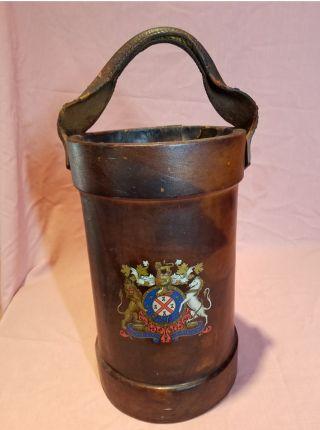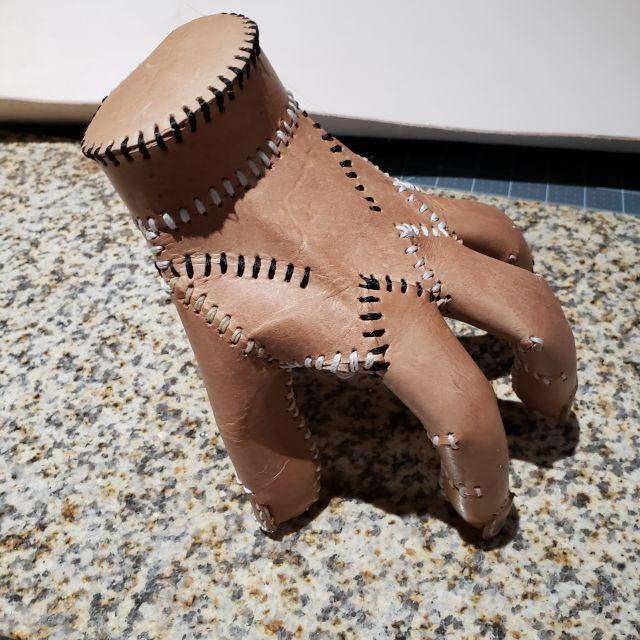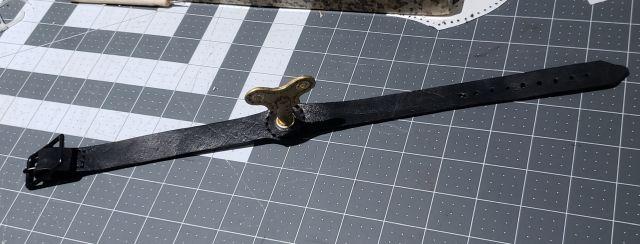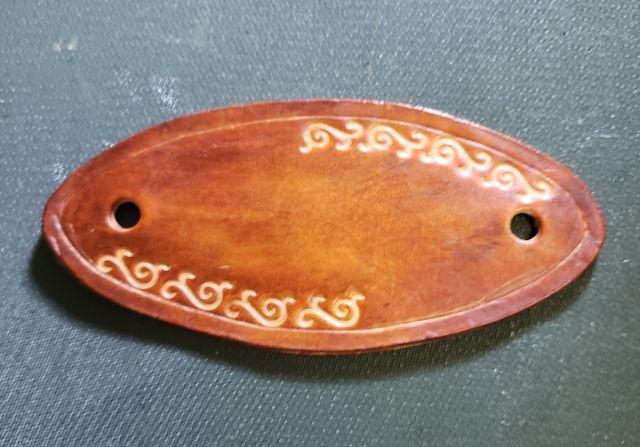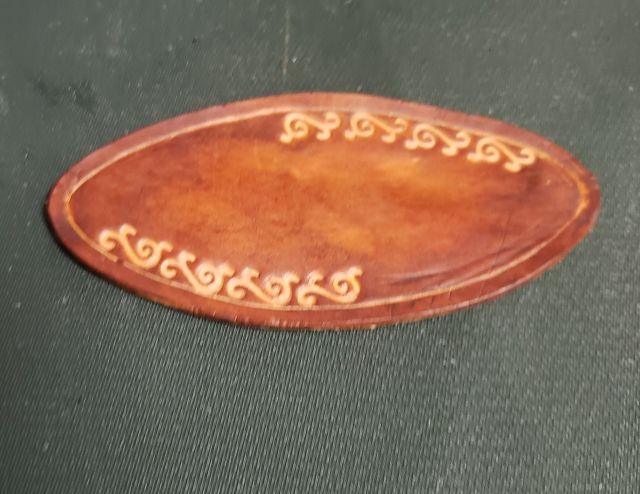-
Posts
1,282 -
Joined
Content Type
Profiles
Forums
Events
Blogs
Gallery
Everything posted by SUP
-
@Littlef you can get it on Temu...less than 1.5 dollars. They call it "Multilateral Aluminium ruler".
-
-
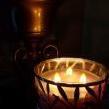
Leather bucket used by English firefighters in the past.
SUP replied to SUP's topic in Leather History
@fredk @zuludog when you stop to think of it, what you both say makes perfect sense but I think most people today do not think behind the reasons of why something was practical. We just say, "Oh! Olden times they did not have metal buckets, so they used leather... inefficient" when actually, it is just the opposite in those circumstances. @zuludog the same with the boots. Thank you both for sharing your knowledge. -

Leather bucket used by English firefighters in the past.
SUP replied to SUP's topic in Leather History
Wow! I didn't know that. I just put up what was in the description of the bucket. So this could be vintage rather than antique. -
I saw this online and thought I should mention it here - a leather bucket used to carry water to fight fires. I believe it is 9 inches in diameter and 15 inches tall.
-

What is Mycelium Leather? Does it exist?
SUP replied to RobertoDR69's topic in Leatherwork Conversation
I can never understand people who don't want to use leather. I don't see them telling people not to eat beef or other meats; I know people who only use 'vegan leather' but who eat meats! Besides, expecting the world to stop eating meats is a pipe dream. My take is that as long as people eat the insides of an animal, I am using the outsides - making best use of the animal's involuntary sacrifice. When I say that, the vegan warriors usually shut up. LOL Besides, I wonder about mycelium leather - if not properly treated, will there be spores left behind? If so, if the leather gets wet or even in humid weather, will there be mushrooms sprouting on handbags and watch straps? New fashion statement perhaps? -
That is very informative. Learning from classes and tutorials is not half as informative because we learn the theory and method but actually just watching someone carve in this way, I learnt a lot more. Thank you.
-
This post is for 29th oct 2023 when I checked the leather but delayed putting it up here. Not much change in any of the pieces anywhere. The only thing becoming more noticeable is that all the oiled pieces kept outside, constantly exposed to the elements, have darkened, to more or less the same extent now. The unoiled piece is very pale compared to the oiled pieces. Texture remains the same. This week is cold and below freezing. Let's see how that makes a difference.
-
As @TomE says, you could talk to @bruce johnson . He is an extremely helpful gentleman and will guide you on exactly what you need. He also sells tools of different brands, so you will have a variety from which to select. His tools are always well sharpened so you don't have the issue of having to sharpen them on receipt.
-
No fungus on any of the pieces in any of the locations. They appear to be slightly drier this weekend and curving a bit. I plan to check them on Sunday - 2 weeks from the previous check, and determine which need oiling. I think I will oil as per requirements of individual pieces Then I will be able to determine which oils allow longer periods between oilings.
-
@Sheilajeanne yes once she paints it I will ask her to send me pics and post them here. @fredk I do plan to make another, with changes planned right from the beginning. This was exactly following the pattern. . But that size of holes is needed, with the type of stitching. Even with this size of holes, getting the needle through in awkward corners was bit of a struggle. It was fun anyway. I will need to use stronger magnets. This time I was in a hurry to send it across the country in time for Halloween, so just used what I had. Daughter needs time to plan and paint and dry it all. And the idea of slim bar magnets under the nails is a great. I have a couple of cut fingers not yet stitched... I will try on those, even if I do not stitch the entire hand immediately. I should get those stronger magnets in Amazon, isn't it?
-
@maggielj That is very beautiful. Like @Chux and @KYCat said, looking at it makes me want to learn beading.
-

Women's stuff ...........
SUP replied to Gezzer's topic in Purses, Wallets, Belts and Miscellaneous Pocket Items
Woman here... @Gezzer those are really nice! Love the shape and the elegant pattern as well. Very versatile, which is important. A suggestion - why not make some with embossed leather scraps as well? I do that because sometimes, tooled ones might not match with outfits. (I do not really tool as yet, but that is a different matter!). If you are selling them, you might reach a wider range of people. It will be an easy job too - no tooling, just slap on a liner if too soft or thin, cut and complete. You make such beautifully shaped barrettes, they are sure to be a hit. -
@MudBugWillit would be a good idea to add a short write-up to give people an idea about the site and make people interested in actually looking at the video. Otherwise, people will be reluctant to just look at a video to learn what a site is all about. Imagine if more sites said the same. How many people will look at such videos without knowing anything about the site? You might miss out on people buying your services because of that. That would be a pity. Also, don't take offense if people give you constructive criticism. That is a part of what this forum is all about - decent people who guide others on how they can make improvements. Of course, people could flatter you saying everything is wonderful, but then, you will not know what is missing or could be improved. Just my two bits.
-
@bruce johnson . I do not plan to buy swivel knives on Amazon anyway. That was only for a first time - when I bought a set when I first started leatherwork. Now I am gradually replacing some of the things with better quality tools. A swivel knife is one item that has to be of good quality. I am still learning construction techniques so not moving on to tooling as yet but I can see that coming soon. There is just so much construction one can do. I am slowly looking for unusual tooling patterns or drawing my own. Asian and European themes perhaps. Thank you for the tips on the really good makers of swivel knives. I will probably start with Barry King and go ahead from there.
-
@bruce johnson that is very detailed information. Thank you. There is so much to learn. I will probably first try with a cheaper swivel knife to get an idea of it, then buy a good one. @tsunkasapa yes. the blade is everything, isn't it but Bruce, are the blades of new knives good? I mean, of harder steel? I heard that these days, most knives have softer steel. Is that true?
-
@ArkieNewbie That is great. How do you apply it? Chrome tanned leather will not get burnished so do you just apply it all over and let it dry? Do you dilute it?
-
Once I decide to start tooling, which I do not as yet have the courage to do, I will buy a good swivel knife. Until then, investigate so that when I am ready, I know which I want to buy. Thank you for all the information and insight, @Gezzer, @bruce johnson, @Burkhardt
-
My barrette, post-antiquing and then, after burnishing with Tokonole. Used an old denim cloth to burnish. This is just to wear at home, so just rough work. Burnishes very well. Now I wear this daily and see how the Tokonole stands up to daily use, conure nibbling, etc. This is burnished with the Tokonole. This is prior to burnishing.
-
Beautiful work! I love the camera case, purses and that light blue watch strap. The colors are beautiful.
-
@bruce johnson thank you. I wondered. I like to collect as much information as I can before I need to make any purchases.





